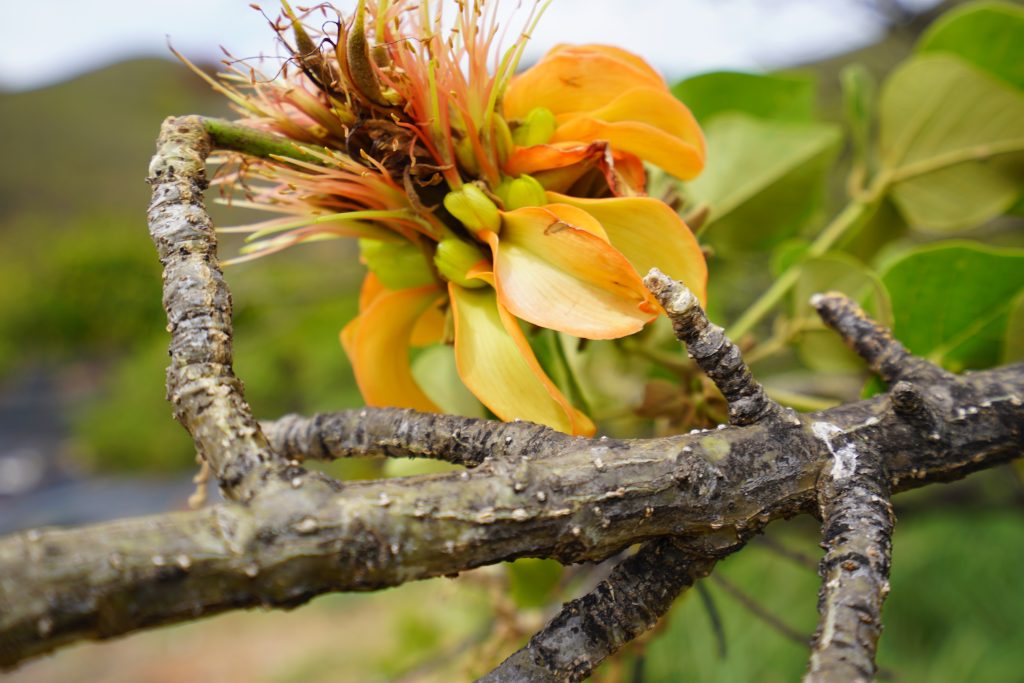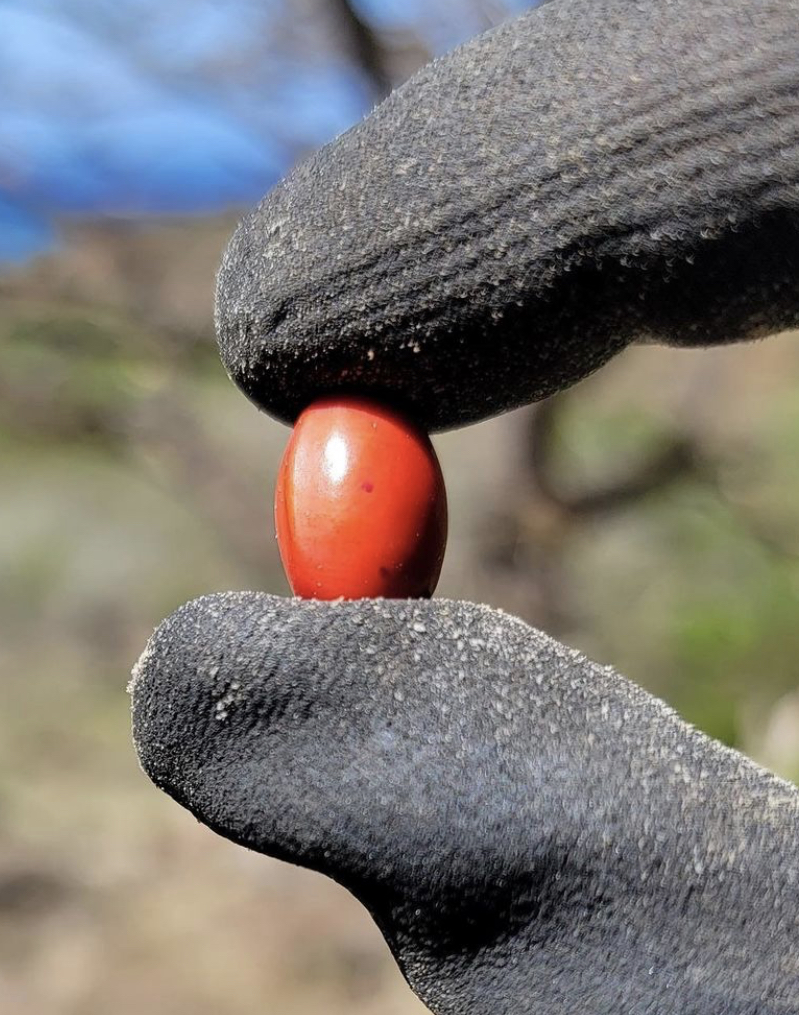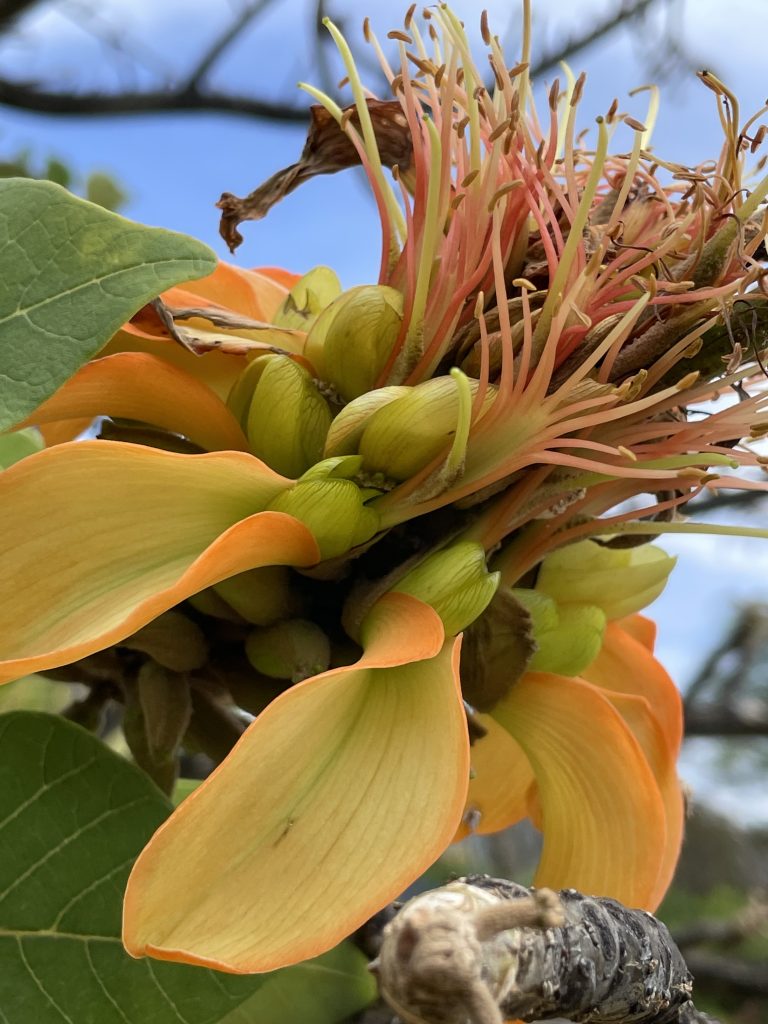Wiliwili

Names
- ʻŌlelo Hawaiʻi: Wiliwili
- Scientific: Erythrina sandwicensis
Species Information
This species is endemic to Hawaiʻi and will grow in dry environments where few species can survive. Wiliwili tree populations can have a variety of different colored flowers or be composed of flowers of a single color. Dissimilar to most Hawaiian tree species, wiliwili trees are deciduous: they will lose their foliage during the hottest summer months and return to life during the winter. The lightweight wood of the wiliwili tree was used by early Hawaiians to build canoes, fishing gear containers, and surfboards. Flowers were used to make lei.
The wiliwili was nearly driven to extinction when an invasive gall wasp was introduced to Hawaiʻi. Researchers and agencies in Hawaiʻi worked quickly to identify a biocontrol agent: another wasp that attacked the invasive gall wasp and nothing else in Hawaiʻi. This process saved the wiliwili from extinction. You can learn more about biocontrol in the video below and at biocontrolhawaii.org.
Distribution
Wiliwili can be found growing in dry forests on the Main Hawaiian islands at elevations below 2,000 feet.
Habitat
Wiliwili can be found in dry, low-elevation forests.
Threats
Wiliwili face threats of increased development, fires, ungulate grazing, invasive species, and non-native plant growth.
Plans and Projects
Videos
Photos
References
Hawaiʻi Invasive Species Council, DLNR: Biocontrol Hawaiʻi: biocontrolhawaii.org
Native Plants Hawaiʻi, University of Hawaiʻi. Erythrina sandwicensis: https://www.ctahr.hawaii.edu/oc/freepubs/pdf/OF-10.pdf
Bishop Museum, Plants of Hawaiʻi. Erythrina sandwicensis: https://plantsofhawaii.org/detail/%7B5BB9D506-8EED-47BB-B377-B3949F3137D3%7D




